For most of us, a trip to Japan is a once-in-alifetime getaway. And with temples to marvel at, sashimi to sample and mountains to climb, you won’t want to waste an hour – let alone a day of your time there.
But as the yen continues to plummet and Japan becomes increasingly popular, the country has suffered a glut of visitors with overcrowding at the most popular spots and hiked-up prices for foreigners, many of whom are making return trips to see more of the fascinating nation.
It really is good value. Five years ago, a euro fetched 120 yen, but that’s soared to 178 yen now – and it has been as high as 200 yen.
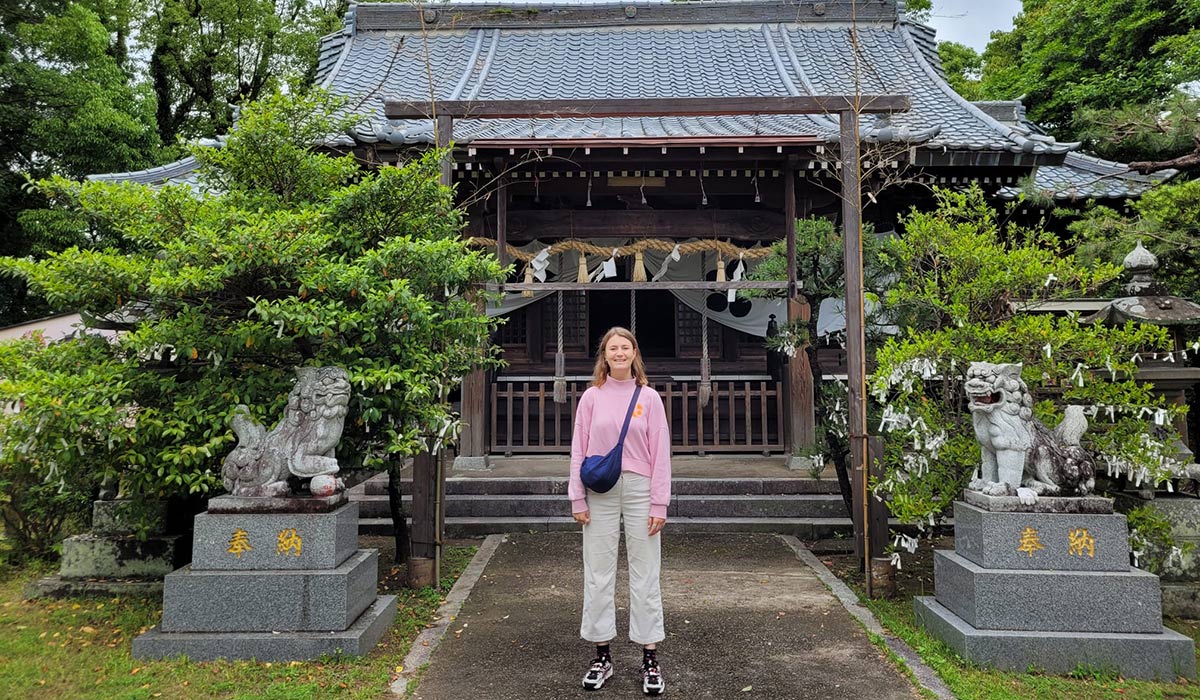 Genie Harrison – her expert’s guide to Japan, At a temple in Kyushu. Pic: Supplied
Genie Harrison – her expert’s guide to Japan, At a temple in Kyushu. Pic: Supplied
Meanwhile, direct British Airways return flights to Tokyo are from as little as €704, and if you’re willing to go via a stopover in Shanghai, fares on China Southern from London are as little as €420 return.
So what’s the best way to see the Land of the Rising Sun without falling into tourist traps? For most, the standard trip to Japan comprises a combination of visits to Tokyo, Osaka and Kyoto and then, possibly, Hiroshima in the south of Japan’s main island Honshu, the site of the first devastating atomic bomb in 1945.
While all of these spots are certainly worth a visit, those with more time to play with might consider heading elsewhere, too, including more of Japan’s other main islands.
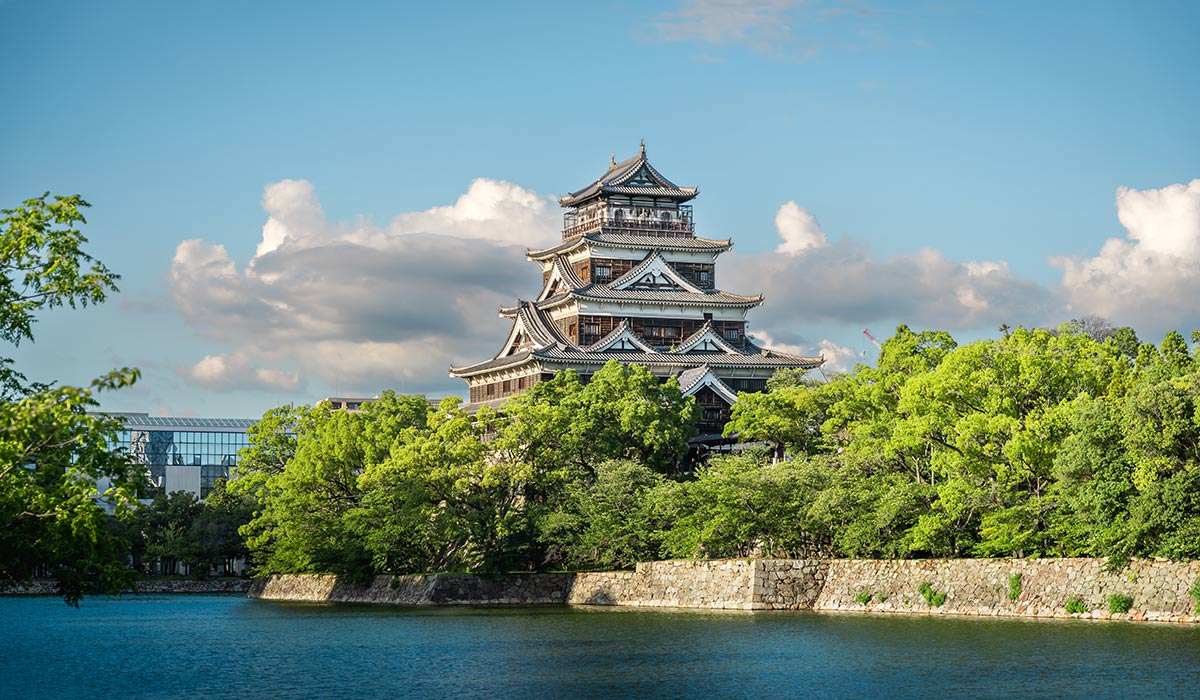 Hiroshima Castle Japan Ancient Summer. Pic: Shutterstock
Hiroshima Castle Japan Ancient Summer. Pic: Shutterstock
After spending two years living in this weird and wonderful country, here’s my guide to seeing Japan away from the crowds, well and truly off the beaten track.
Tokyo – Live the high life
Climbing to the top of any of Tokyo’s towers will give you a chance to marvel at the city’s sprawling mass in all of its entirety and most visitors scale the Tokyo Skytree Observation Deck in Sumida City, which can cost up to €15 per adult on weekdays.
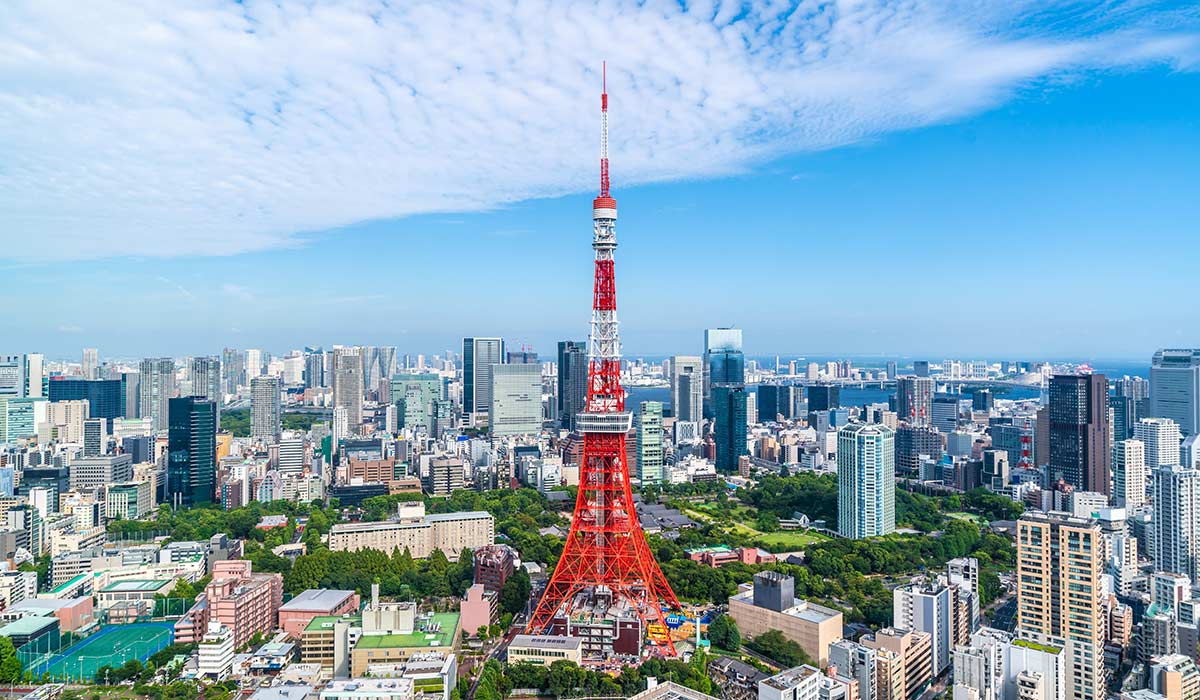 tokyo tower and panoramic urban city skyline aerial view under bright blue sky and sun in Tokyo. Pic: Shutterstock
tokyo tower and panoramic urban city skyline aerial view under bright blue sky and sun in Tokyo. Pic: Shutterstock
However, the Tokyo Metropolitan Building in Shinjuku offers equally appealing panoramic views of the city at 243m – but is free to visit. When weather conditions are good, you can see the Skytree from the observation point, as well as Tokyo Tower and Mount Fuji. Tokyo’s lights are best experienced at night, so aim to arrive after dusk, keeping in mind the last entry time of 9.30pm.
Going green
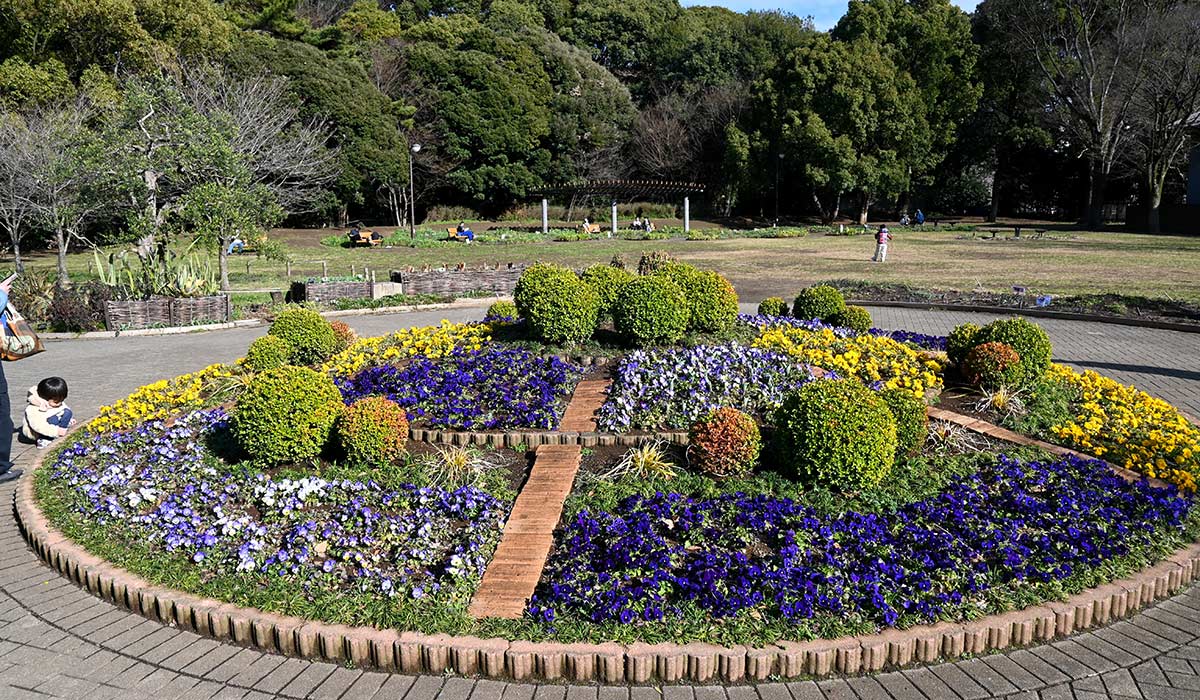 Flowers in Yoyogi Park Olive Garden. Pic: Shutterstock
Flowers in Yoyogi Park Olive Garden. Pic: Shutterstock
Despite its reputation as an urban hub, Tokyo is home to a number of wonderful green parks. The usual tourist spots are Yoyogi Park, near Harajuku, or Shinjuku Gyoen (where there’s an entrance fee of €3). For a more relaxed alternative, Inokashira Park in the Kichijoji neighbourhood makes a great choice – and a good spot for cherry blossom picnics, if you are visiting in spring.
Visitors can rent swan boats on the lake, grab coffee (try Blue Sky Coffee in the park) or visit the little zoo. For Ghibli animation fans, the park is a 12-minute walk from the dedicated Ghibli Museum. When you get hungry, Garage 50 by Kichijoji station offers cheap pizza.
Watering holes
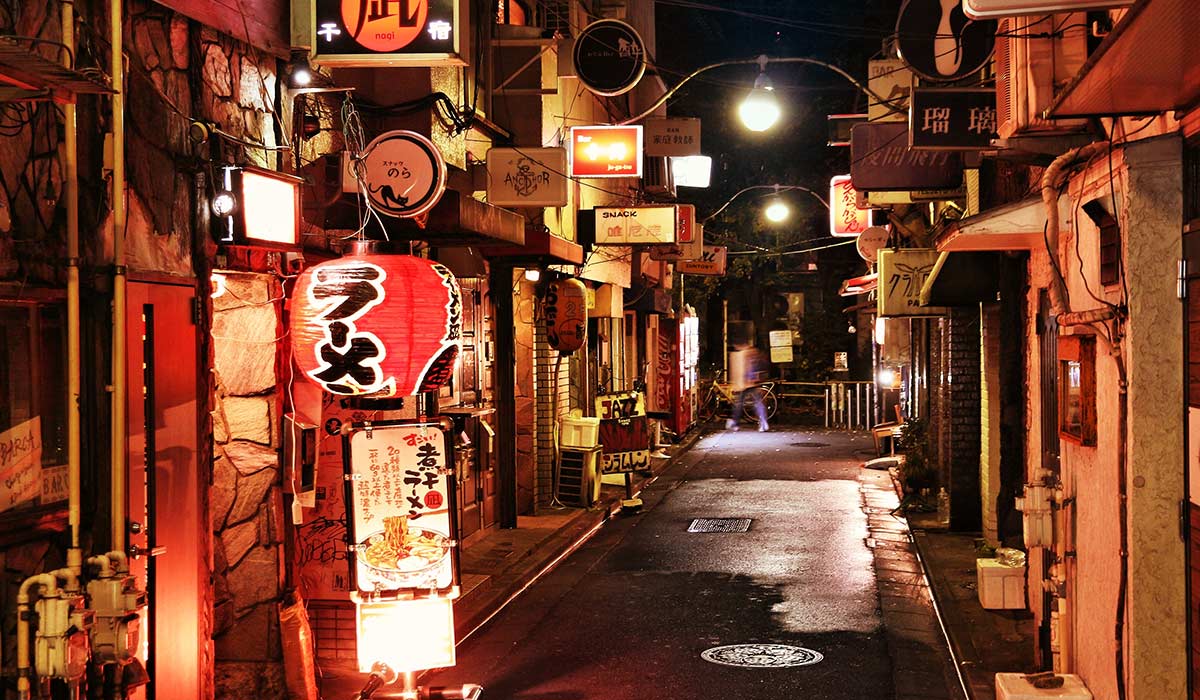 Narrow streets of Golden Gai restaurant area in Tokyo, Japan. Pic: Shutterstock
Narrow streets of Golden Gai restaurant area in Tokyo, Japan. Pic: Shutterstock
Japan is renowned for its tiny bars and Tokyo’s alleyways are paved with some of the best, often seating only two or three people at a time.
Most visitors make a beeline for Shinjuku’s Golden Gai to get a flavour of the city’s nightlife, where there are more than 200 ‘shanty-style’ bars and restaurants to peruse.
Sadly, though, Golden Gai’s popularity has resulted in steep prices for drinks, as well as hefty cover charges. Instead, take the JR line to Ebisu, a trendy neighbourhood just south of Shibuya, with its own alleyway of izakayas (Japanese pubs) a short walk from the station.
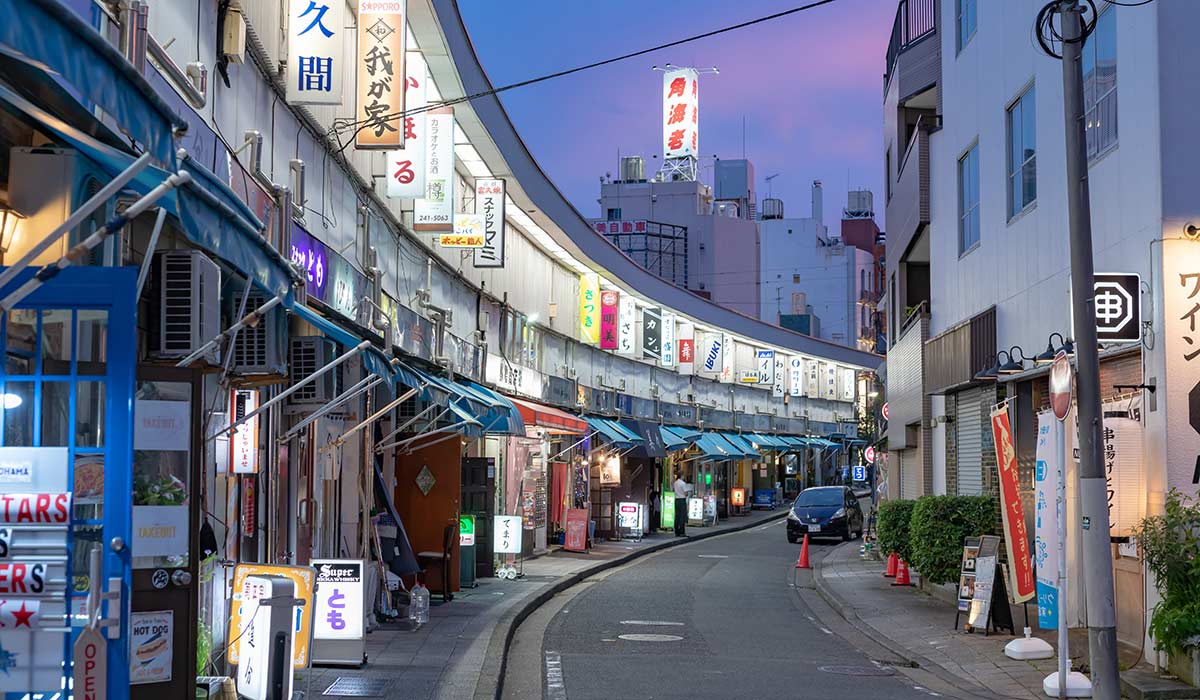 Yokohama, Kanagawa, Japan. Pic: Shutterstock
Yokohama, Kanagawa, Japan. Pic: Shutterstock
Although a little further afield, you can also try the Harmonica Yokocho in Kichijoji, where many locals visit for a frosty glass of Kirin. And while the level of English in Japan remains relatively low, the rule still stands: the smaller the bar, the chattier the clientele.
Quirky neighbourhoods
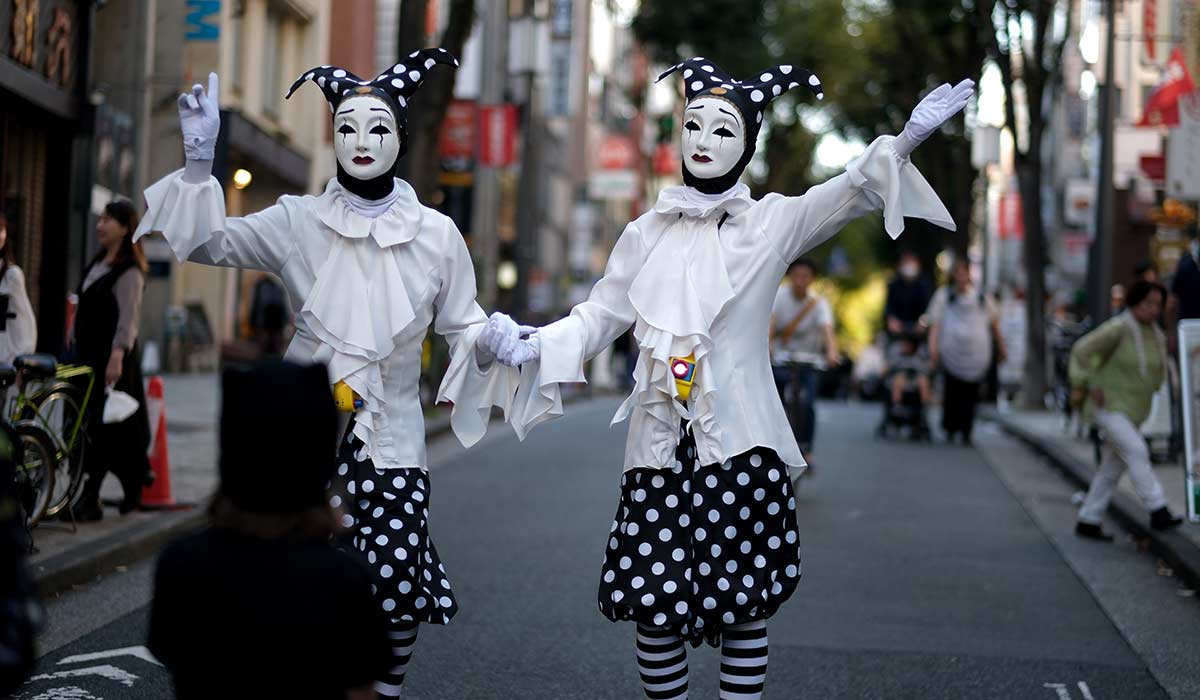 Kagurazaka, Tokyo, Japan – A street performers in kagurazaka. Pic: Shutterstock
Kagurazaka, Tokyo, Japan – A street performers in kagurazaka. Pic: Shutterstock
First-time visitors to Tokyo will inevitably want to join the 2.4million who traverse the world famous Shibuya Crossing every day, or wonder at Shinjuku’s neon-lit skyscrapers.
After sampling these well-trodden hotspots, check out a quirky neighbourhood such as Koenji, a centre of bohemian subculture since the 1960s, with a laidback scruffiness, busking musicians in the town plaza and vintage clothing shops Gyoza Dokoro Tachibana offers plates of gyoza (a type of dumpling) with every beer ordered, or try Tensuke, a ‘hole-in-the-wall’ tempura restaurant known for its deep-fried eggs.
Alternatively, the chic Kagurazaka neighbourhood on the edge of Shinjuku, is known as ‘Little Paris’, with European-style shops, French restaurants and patisseries. It was also part of Tokyo’s geisha district – and you may even catch a glimpse of some of the remaining geishas.
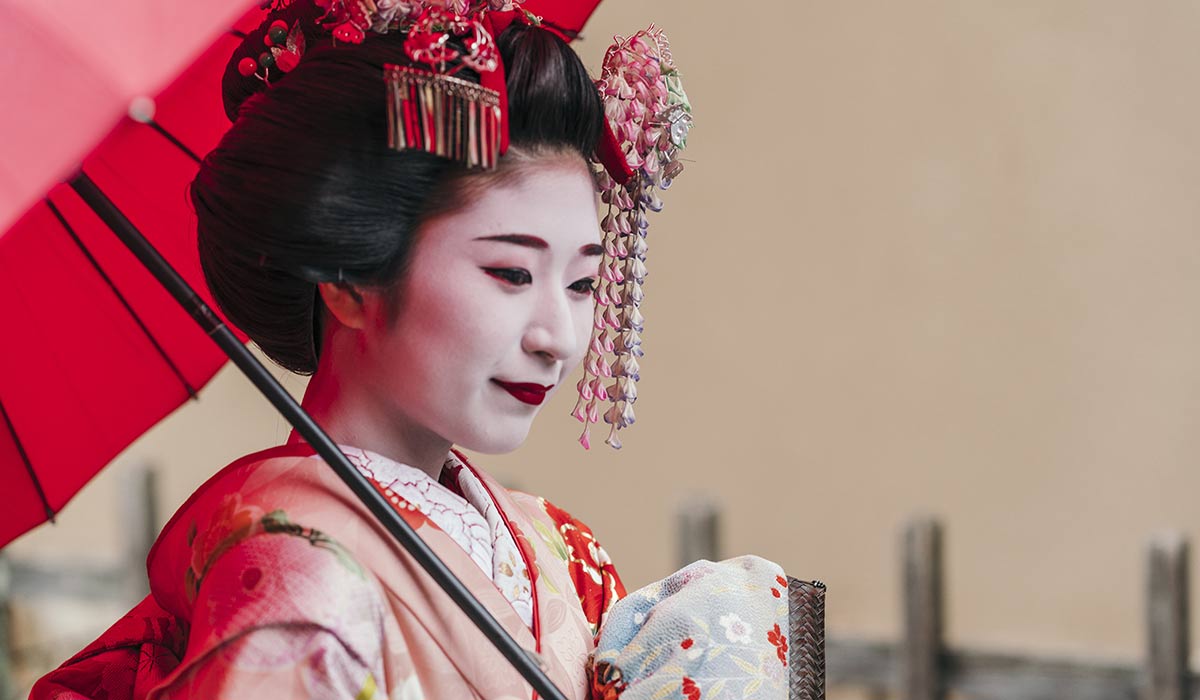 Portrait of a Maiko geisha in Gion Kyoto. Pic: Shutterstock
Portrait of a Maiko geisha in Gion Kyoto. Pic: Shutterstock
Try Aux Merveilleux de Fred for patisseries, sit outside Weekenders Coffee watching passers-by – and if you’re feeling really fancy, there’s a three Michelin-starred restaurant, Kagurazaka Ishikawa.
KYOTO – Don’t get bamboozled
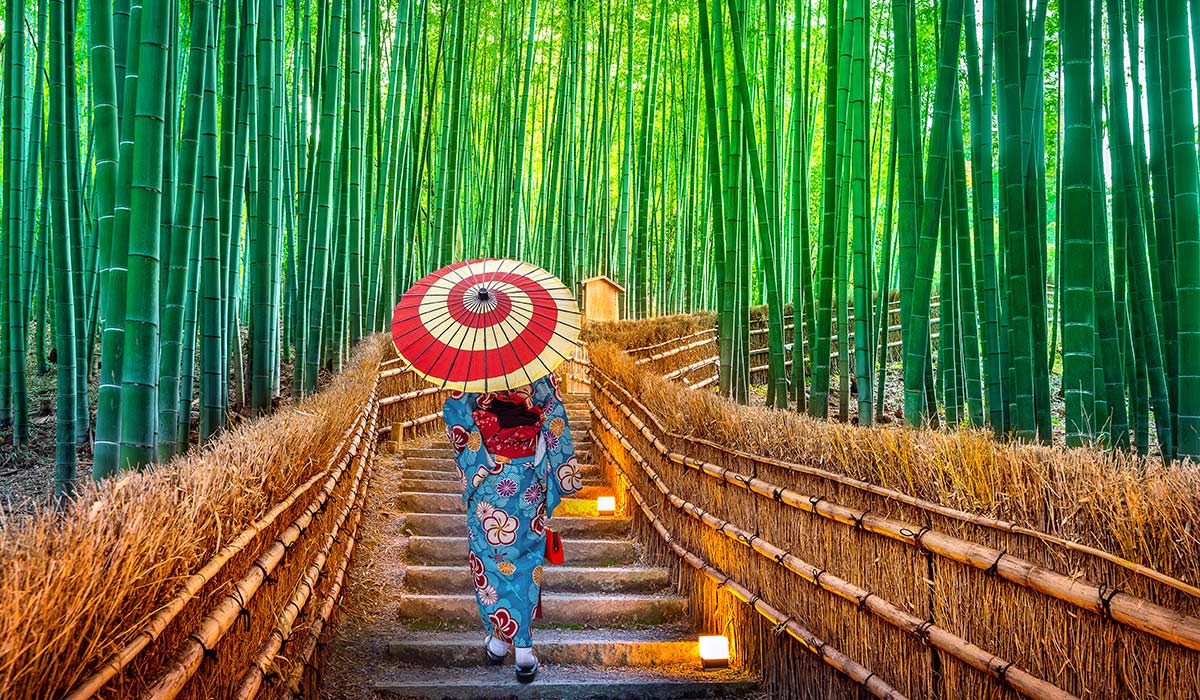 Asian woman wearing japanese traditional kimono at Bamboo Forest in Kyoto, Japan. Pic: Shutterstock
Asian woman wearing japanese traditional kimono at Bamboo Forest in Kyoto, Japan. Pic: Shutterstock
Many visitors will have the Arashiyama Bamboo Forest high on their list of ‘must-see attractions’. A 30-minute train ride from the city centre, the grove was once known for its tranquillity, as well itsnatural beauty. However, visit now and you’ll likely spend your time avoiding other people’s Instagram shots.
The best way to capitalise on jetlag is to visit as early as possible. Take an early train out (the first runs at 5.31am) and spend the morning in peace.
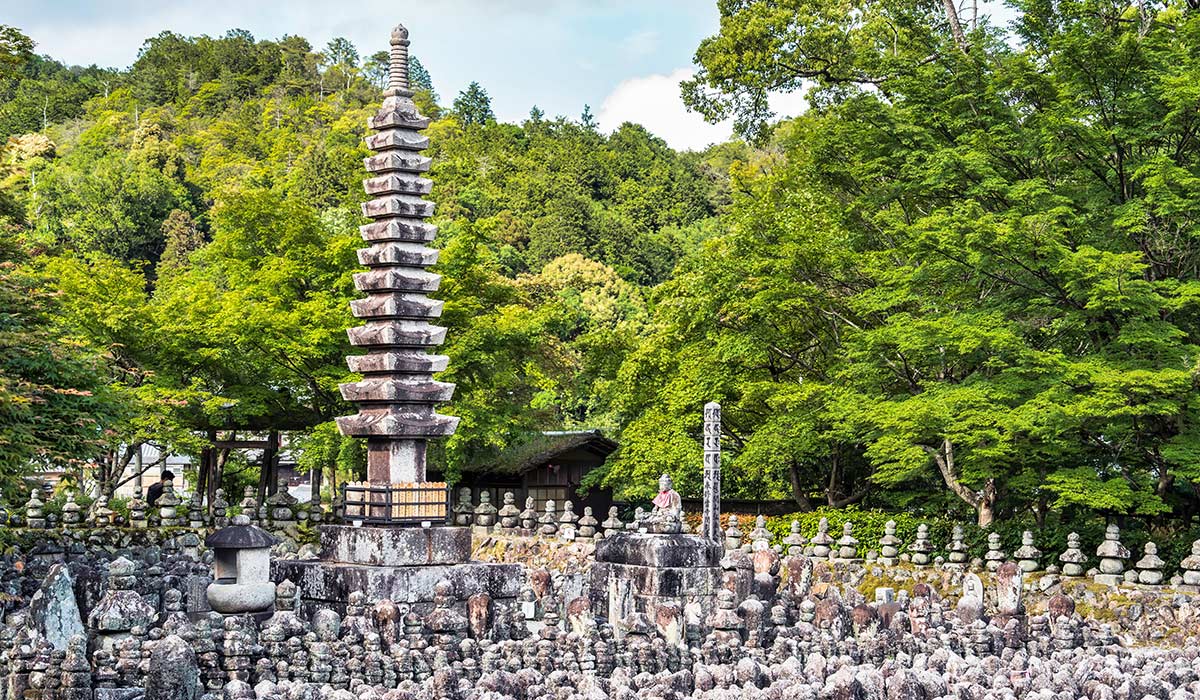 Carved stones memorial statues at Adashino Nenbutsuji Temple. Pic: Shutterstock
Carved stones memorial statues at Adashino Nenbutsuji Temple. Pic: Shutterstock
Alternatively, Adashino Nenbutsuji Temple, half an hour from Arashiyama, has a bamboo forest, too.
Founded by Buddhist monk Kukai, the temple is home to more than 8,000 small statues,commemorating the souls of those who died without family, and has a wonderfully peaceful atmosphere.
Alternative temples
Despite the city’s small size, there are more than 1,600 Buddhist temples and about 400 Shinto shrines.
Unfortunately, though, most visitors tend to visit only the most popular sites: Kiyomizu-dera, Kinkaku-ji (or, the Gold Temple) and Fushimi Inari.
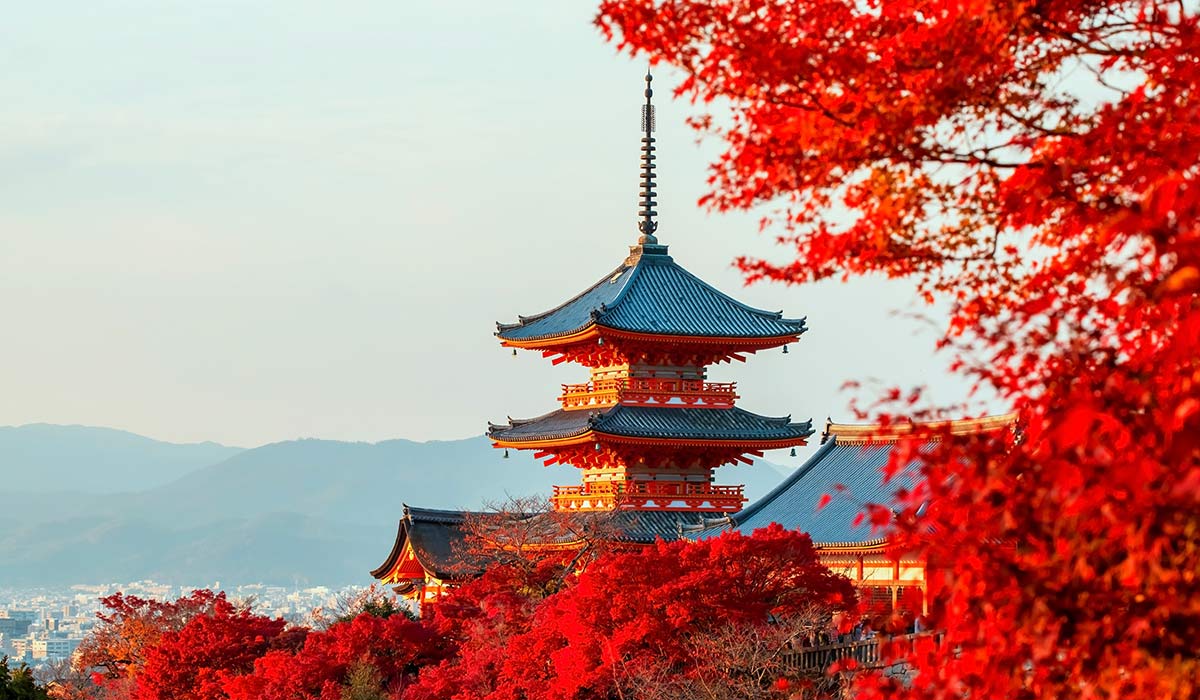 Famous travel destination especially on fall season in Kansai, Japan. Pic: Shutterstock
Famous travel destination especially on fall season in Kansai, Japan. Pic: Shutterstock
So, instead of hitting the usual spots, consider visiting Ginkaku-ji (the Silver Temple) in the east of the city. While not actually covered in silver (unlike its gold counterpart), the temple grounds include the Silver Pavilion, a sand garden known as the ‘Sea of Silver Sand’, and a moss garden.
Ginkaku-ji is also a great place to start the Philosopher’s Path, a walkway which passes by many other temples and shrines.
Kysushu Southern delights
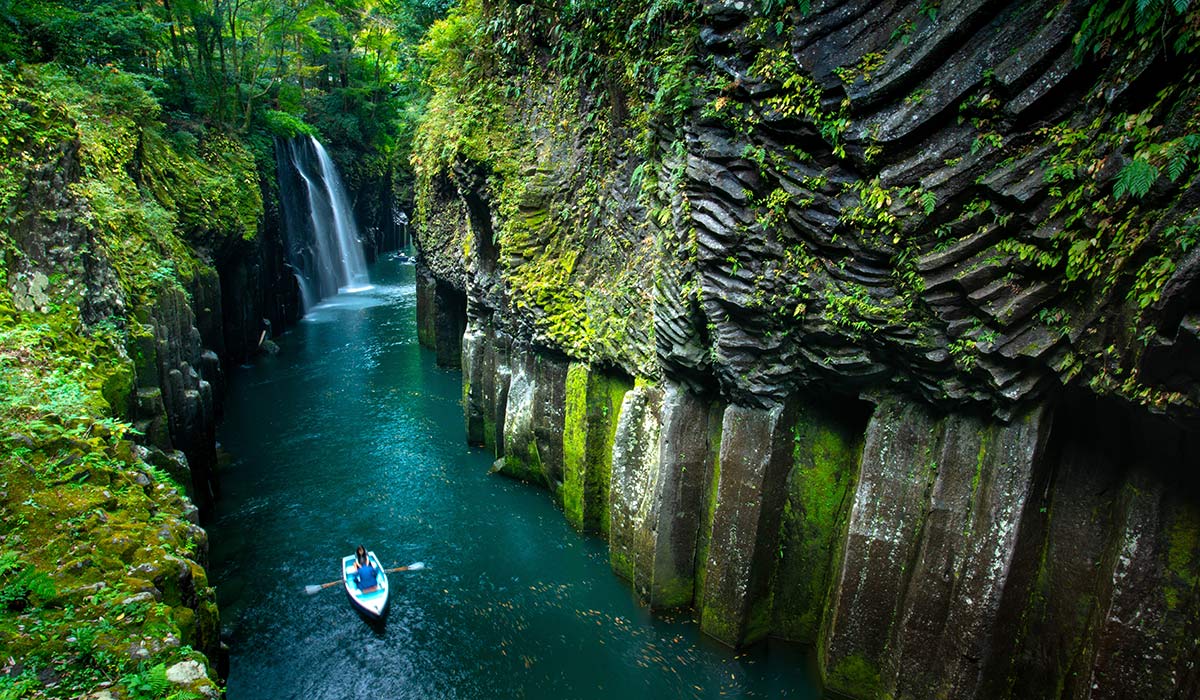 Miyazaki, Kyushu, Japan. Pic: Shutterstock
Miyazaki, Kyushu, Japan. Pic: Shutterstock
Japan’s southern island Kyushu is reachable from Tokyo via a 1h 45m flight or a 3.5h train ride from Kyoto. Its capital, Fukuoka, is a great place to begin exploring the southern isle. Known for its friendly, relaxed vibe, Fukuoka is also home to an abundance of yatai, or open-air food stands – many of which can be found along the Naka River.
Usually open from about 6pm until the small hours of the morning, these little stalls can seat five or six people, serving traditional dishes such as yakitori (grilled chicken) skewers and the local ‘Hakata’ ramen.
When you’ve had your fill, the Fukuoka Art Museum in the city’s west is home to great Japanese and Western art, with the nearby Ohori Park a good spot to relax. Don’t forget to sample the regional sake.
For nature lovers
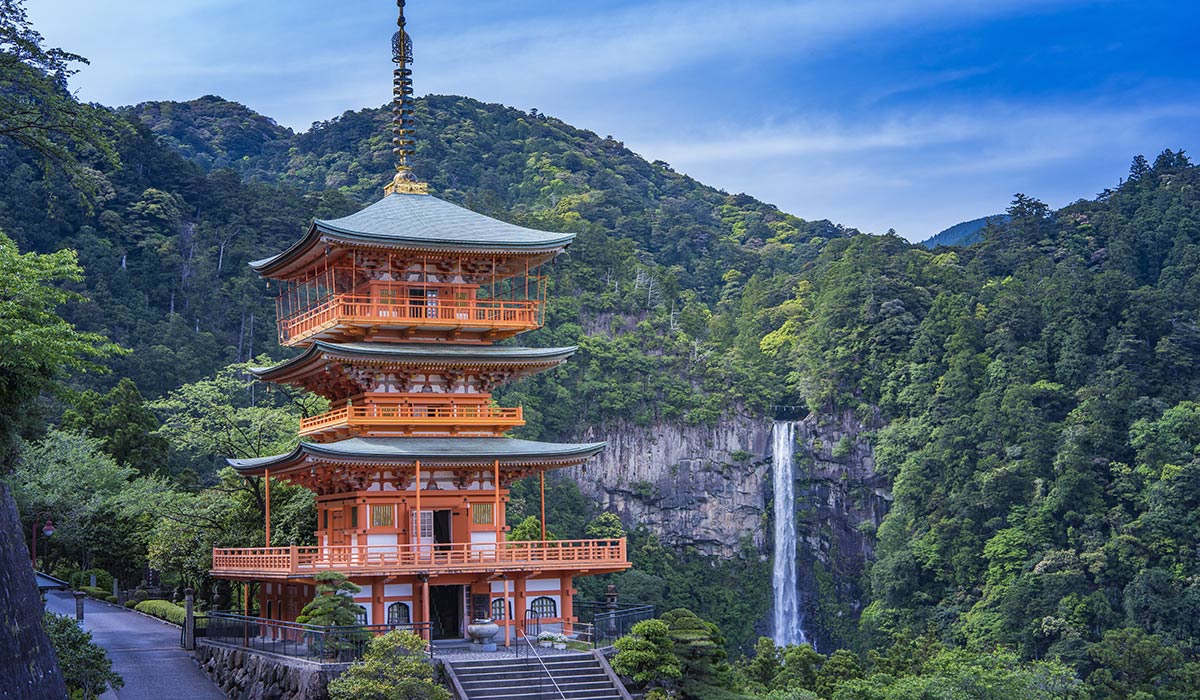 Kumano kodo. Pic: Getty Images
Kumano kodo. Pic: Getty Images
The rest of the island is also worth exploring. For hikers and nature lovers, the Kumano Kodo pilgrimage, or walking trail, is a fantastic way to see Kyushu’s lush vegetation as well as experience its religious history up close – the route features many important temples and shrines.
Those feeling adventurous should consider a visit to Yakushima Island, a Unesco World Heritage site. A 40-minute boat ride from Kagoshima port, the subtropical island has some of Japan’s oldest trees – many more than 1,000 years old – and was thought to be the inspiration for Studio Ghibli’s film Princess Mononoke.
Shikoku Remote mountains
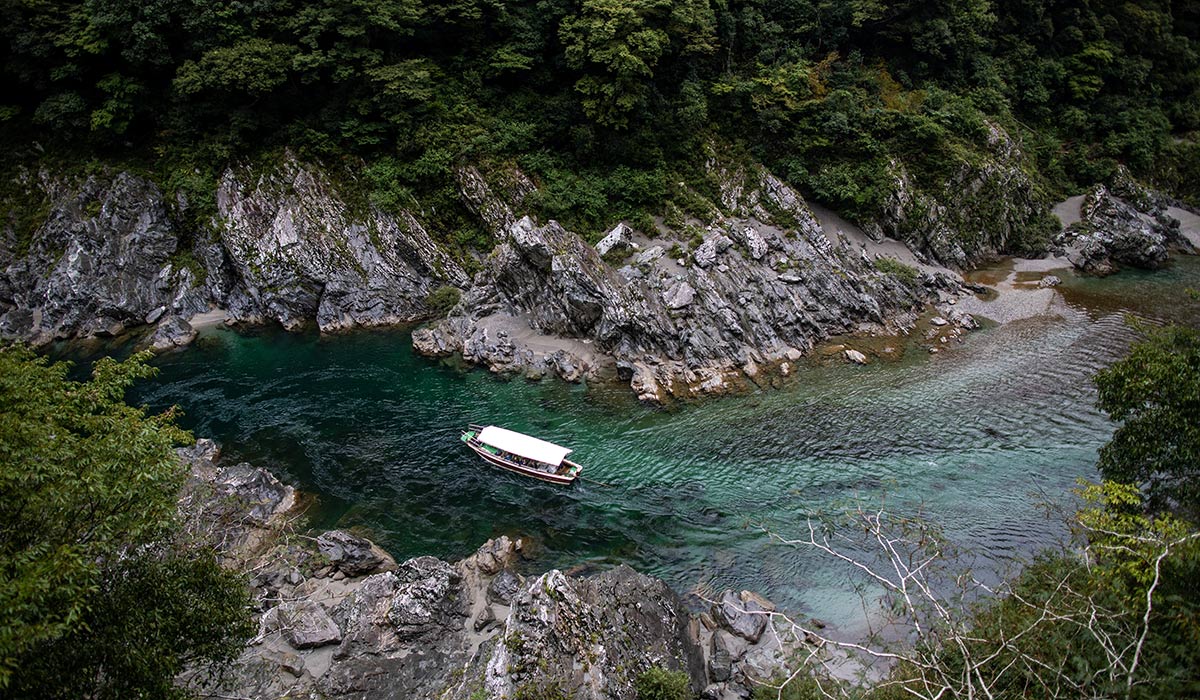 Shikoku Island, Japan. Pic: Shutterstock
Shikoku Island, Japan. Pic: Shutterstock
Despite being the least visited of Japan’s four main islands (it welcomes less than one per cent of all overseas tourists), Shikoku has plenty to offer and is reachable via a 1 hour 15 minute flight from Tokyo to its capital, Takamatsu.
The island is home to the Iya Valley, a remote mountainous region full of rocky gorges traversed via vine bridges, which you can even try for yourself. While easily accessible by car, the valley can also be visited via highway buses and trains.
Arty island living
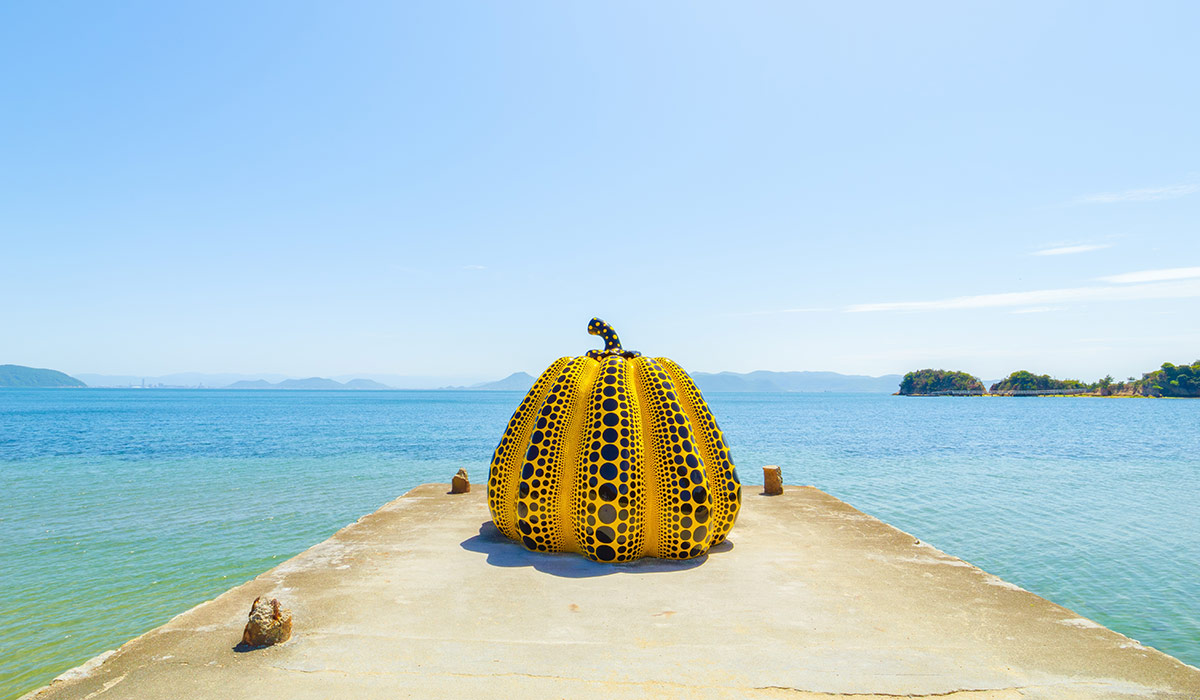 Naoshima Island in Kagawa Prefecture in Japan. Pic: Shutterstock
Naoshima Island in Kagawa Prefecture in Japan. Pic: Shutterstock
Shikoku is also a great place from which to visit Japan’s Seto, or ‘art’ islands, of which Naoshima is best known.
Plunged into economic decline following the Industrial Revolution, these islands were offered a lifeline when Fukutake Publishing invested in the land, transforming them into hubs of artistic activity.
Today, they are home to several fantastic museums including the Lee Ufan Museum and the Ando Museum, as well as one of contemporary Japanese artist Yayoi Kusama’s iconic yellow, spotted pumpkin sculptures.
Every three years, there is the Setouchi Triennale, a ontemporary art festival which lasts 100 days.


AloJapan.com